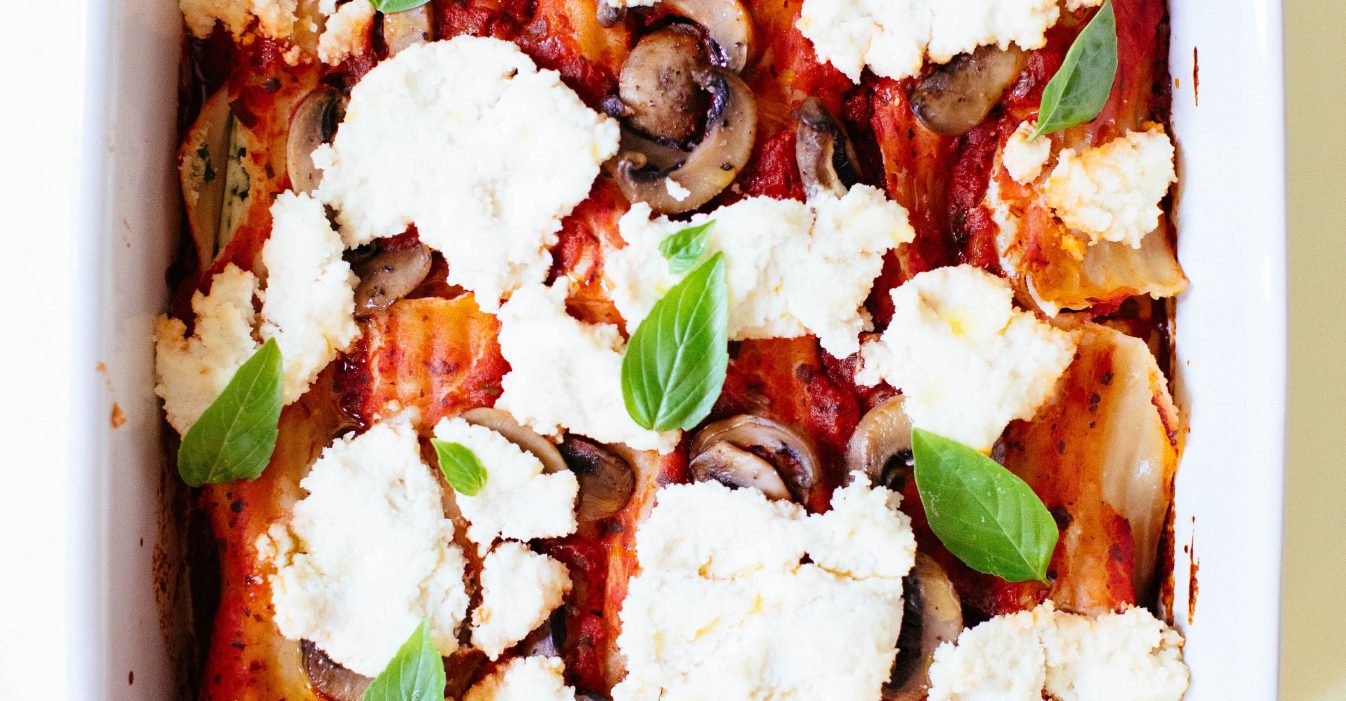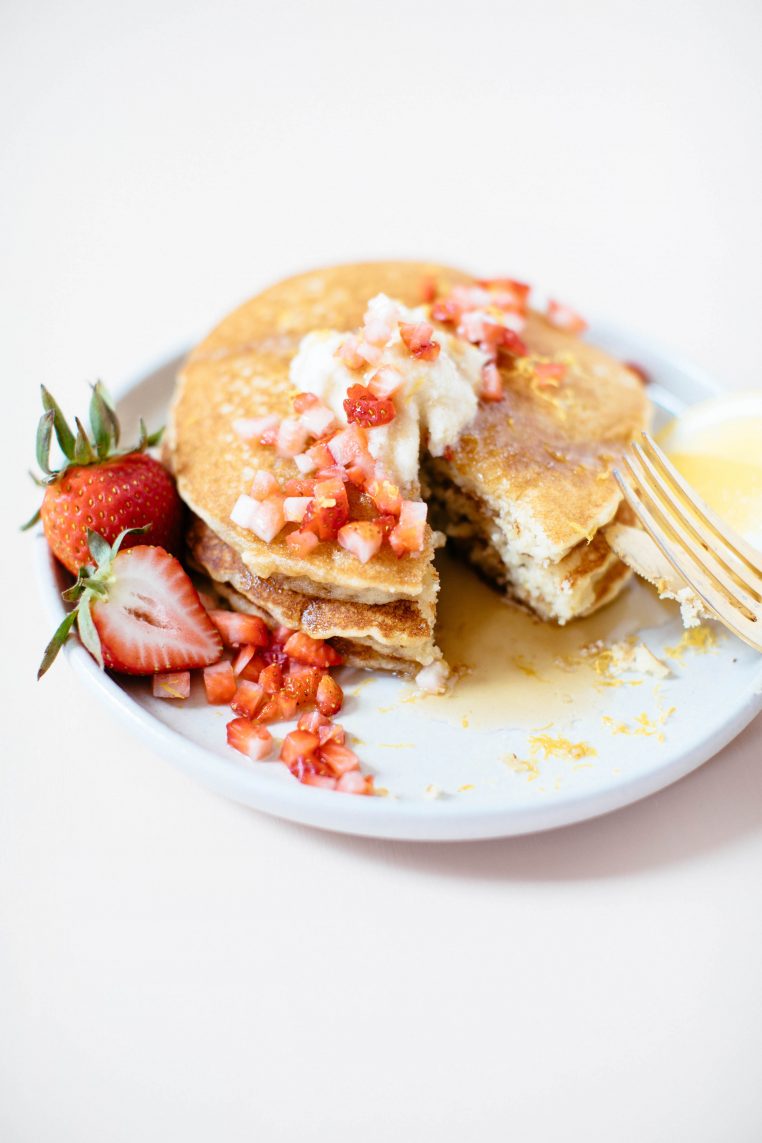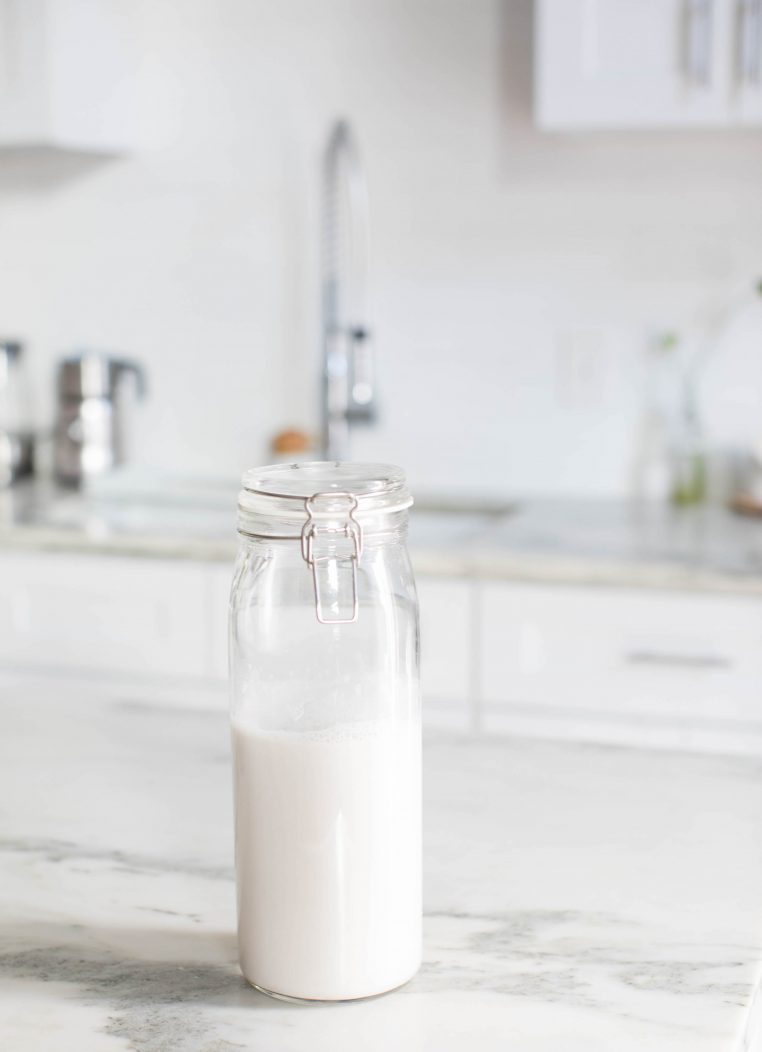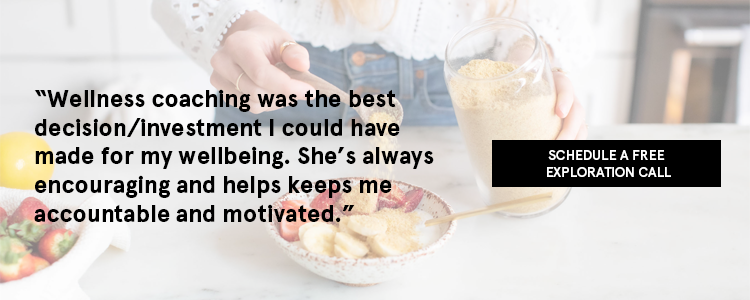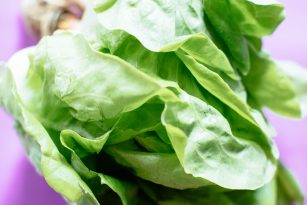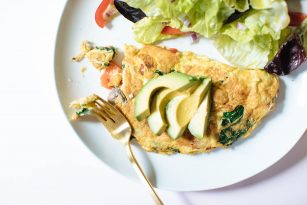Your guide to eating dairy free – how to implement it in your own life, why people choose to do it and the positive impact it may have.
We’re hearing more and more about people choosing to maintain a dairy-free lifestyle. From wellness bloggers to your favorite aunt or even your best friend, I’m sure someone in your life has mentioned they were giving it a go.
While eating dairy-free may be “trending” at the moment, there are quite a few legitimate implications for the diet, as well as many possible nutrition benefits.
Whether you’re new to eating dairy-free or considering making the adjustment, here we’ll walk you through everything you need to know!
What Is Dairy?
Dairy is technically anything that contains or is made from cow’s milk.
Think of traditional milk (whole, skim, buttermilk or the various percents), cheese, cream cheese, butter, ice cream, and yogurt.
This also includes products that are made with these food items, such as dips, dressings, desserts, baked goods and many more.
Why Eat Dairy Free?
People generally choose to maintain a dairy-free lifestyle for one of the following four reasons: medical circumstances, nutrition implications, ethical considerations or skincare.
Dairy intake may exacerbate the symptoms of many disease states and intolerances. Lactose intolerance and ulcerative colitis are just a couple of examples of this. There are also some indications that dairy intake may increase the chances of developing prostate and stomach cancer (1,2).
Additionally, dairy can be a significant source of saturated fat, which has been linked to elevated LDL cholesterol levels (“bad” cholesterol), cardiovascular disease and higher overall serum cholesterol levels (3). Some choose to avoid dairy in order to reduce overall saturated fat intake.
Many people may also choose not to consume dairy because they do not want to support the unethical treatment and production methods utilized by dairies. Currently, about 80% of the United States’ milk production is a result of factory farming (4). To read more about the industry, check out our article on the ethics behind factory farming.
Lastly, in recent years there has been some buzz about dairy consumption and acne. Some recent studies suggest that consumption of dairy products may result in an increased likelihood of developing acne over time (5).
Should I Eat Dairy Free?
So how do you know if you should be eating dairy-free?
Unless you’re avoiding dairy consumption for ethical reasons, your best bet is to talk to a licensed professional.
If you have a medical condition that you’re trying to manage or are simply wondering whether or not dairy is right for you, talk to a registered dietitian who can help you to determine what is best for your body and your specific needs.
If acne is your concern, seek out a board-certified dermatologist in your area who can help you determine the right path for you.
Guide To Eating Dairy Free
After you’ve determined that eating dairy-free is right for you – where should you start?
Depending on how reliant you are on dairy, it may seem pretty daunting to suddenly remove all dairy products from your diet.
Instead of abruptly removing all dairy products and resorting to your other food groups, finding viable substitutes can make the transition much easier.
Dairy Substitutes
Here are some of our favorite substitutes for traditional dairy products!
Milk
Most grocery stores are packed with non-dairy milk for you to try out. Almond, cashew, oat, hemp, soy, coconut and rice milk are some of the most common. When shopping for milk substitutes, try to stick to unsweetened versions whenever you can.
Don’t forget that you can always make homemade nut and seed milk too!
Cheese & Cream Cheese
Dairy-free cheese products are a great way to keep that creamy mouthfeel in your favorite meals.
Always look for the certified vegan label when shopping for these products. That immediately tells you it’s dairy-free so you don’t need to double-check the nutrition label. If on the other hand, you don’t see that indication, just flip the product over and check out the nutrition label.
Whey, casein and sodium caseinate are all proteins derived from dairy. Just be sure you don’t see any of these ingredients, then you’re good to go.
You can also make dairy-free cheese right at home – this almond ricotta is one of our favorites!
Yogurt
Almond, cashew and coconut yogurts are great alternatives to dairy yogurt. Just as with plant-based milk, try and select unsweetened versions as often as you can.
You can always add some fruit, granola or even a little raw honey to add some dimension to the flavor.
Chia seed pudding can also be a great way to switch it up!
Butter
If you’re not eating butter, oftentimes you can use other sources of fat in its place. Olive oil, avocado oil, and coconut oil are great options! You can cook your eggs in them or even season and sauté your veggies with them.
And don’t forget about nut and seed butters, these are great on toast or with crackers.
If you’re looking for a buttered toast type of feel, there are some great plant-based butter products out there today. Just be sure to check out that ingredient list first!
You want to avoid substitute butter that has hydrogenated ingredients or have an excess of added sugar.
Dressings & Dips
Many of these products are traditionally prepared with dairy. Thankfully, there are a few tricks and products we can use to navigate them when eating dairy-free.
Avocado is one of our favorite substitutes for dairy in dips and dressings. Whether you’re buying one of these products or making them at home, you can always count on a good avocado alternative.
We also love using cashews to get that creamy texture, like in this dairy-free queso or this lemon cashew cheese dip.
Label Reading When Eating Dairy Free
An easy trick for always ensuring that your products truly are dairy-free is to check out the allergen section of the nutrition label.
The FDA has created a Food Allergen Label Law that requires all manufacturers to denote when any of the top 8 food allergens (milk, eggs, fish, crustacean shellfish, tree nuts, peanuts, wheat, and soy) are present in their products.
When reading labels, look towards the bottom of the label for the title “contains:”, if you see milk listed there, you know the product is not dairy-free. If on the other hand dairy is not listed, you should be in the clear.
Will I Be Nutritionally Deficient?
The short answer to this is no.
Vitamin D and calcium are the primary nutrients I hear about when someone is debating whether or not to removing dairy from their diet. Yes, your intake of these vitamins and minerals may decrease if you were previously consuming dairy regularly, but that doesn’t mean it has to stay that way!
You can also find small amounts of Vitamin D in fatty fish, egg yolks, mushrooms, and fortified foods. If you’re living in a state where sunlight is a rarity at certain times of the year, you may also want to consider a supplement (whether you’re consuming dairy products or not!).
Calcium is found in seeds, sardines, salmon, almonds, beans, lentils, greens, edamame, tofu and more! There are plenty of ways for you to maintain adequate calcium levels without dairy.
With that being said, everyone is different. Always consult your health care practitioners before making any major decisions about your health.
Does Eating Dairy-Free Work?
If you have a medical or nutrition implication for maintaining a dairy-free diet, I can say with certainty that it truly will be worth your while.
It may seem like a big lifestyle change, but the benefits you can reap truly are amazing. Not only does the research show this, but I’ve also experienced this first hand with many of my clients.
Let’s take one of my ulcerative colitis clients as an example. She came to me with biweekly flare-ups even though she was diligently taking medication daily prescribed by her doctor. Based on her particular situation, I ended up recommending a dairy-free diet as well as additional diet and lifestyle changes. One month later, she had not experienced a single flare up and felt astronomically better.
If your dietitian recommends eating dairy free for an ailment you’re dealing with – trust them! The benefits undoubtedly outweigh the inconvenience of it all. If you’re dealing with a disease state or nutritional implication for a dairy-free diet and are looking for guidance from a dietitian, we would love to help you out.
Additionally, plant-based alternatives to dairy products aren’t just for people eating dairy-free! They’re a great way to add some variety and introduce new nutrients to anyone’s diet.
NS Recommends
Here are some of our favorite dairy-free recipes for you to get started with!
- Ultimate Berry Smoothie
- Almond Lemon Ricotta Pancakes
- Banana Nut Bread
- Not Cheese Cheesy Dust
- Creamy Sweet Onion Dip
Connect With Us
I would love to hear from you – what has your experience been with dairy-free eating? I’m sure there are plenty of others out there who would love to hear about your experience too. As always, you can connect with us on Instagram via @nutritionstripped , @nutritionstrippederica, #nutritionstripped and #nswellnesscoaching.

